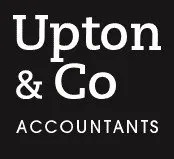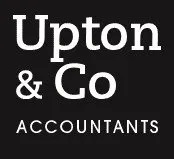Asbestos problem - can a tax break help with the cost?
Asbestos has been discovered during the refurbishment of one of your company’s factories. Environmental waste rules are going make it expensive to remove. How might a tax break mitigate the cost?

Land remediation relief (LRR)
LRR is an enhanced tax deduction of 150% which is available to companies to clean up contaminated land and buildings that they own. This can include removal of harmful chemicals and even certain naturally occurring substances such as Japanese knotweed, radon and arsenic.
Eligibility
The company must own either the freehold or a leasehold interest in the land of at least seven years. The contamination, resulting from industrial activity such as construction with the potential of causing relevant harm, must have been present when the land was acquired (except for Knotweed) and be caused by an unconnected third party. Evidence of the relevant harm should be obtained, i.e. a study showing the contamination is likely to cause either death or significant injury to living organisms or damage to the environment.
Qualifying costs
Only marginal costs which are incurred because the land is in a contaminated state qualify, excluding any subsidised by grant funding. Qualifying expenditure includes materials and employees employed directly in the remediation work, subcontractor costs, and professional/preliminary expenses. Make a thorough analysis of project costs to maximise your LRR claim.
Tax relief
The available tax relief is a deduction of 150% of the qualifying costs. Loss-making companies can surrender an amount equal to the land remediation loss in exchange for cashback of 150% tax relief on qualifying costs. For example, if the asbestos removal costs £100,000, you can offset £150,000 against your company’s profits, which gives you a tax saving of £37,500 (25% x £150,000). The LRR tax saving for each pound of qualifying spend is 37.5p if the company pays corporation tax (CT) at 25% or 28.5p if the CT rate is 19%.
If your company makes a loss for an accounting period in which it incurs remediation expenditure, it can elect to receive a tax credit from HMRC instead of the LRR deduction. The tax credit is the lesser of 16% of the qualifying LRR or unrelieved trading loss. This is equivalent to a cash return of 24% of the expenditure incurred (16% x 150%).
Example. Acom Ltd’s trading profit for 2024 was £30,000. If it was entitled to LRR of £150,000, the net loss would be £120,000. Therefore, Acom can claim a tax credit to give it cash back from HMRC of £19,200, i.e. 16% x the lower of the LRR (£150,000) and the loss (£120,000).
Claiming
You must claim the LRR within two years of the end of the accounting period in which the clean-up costs were incurred. If you have already submitted the company’s tax return for the year in question, you can amend that return at any time before that two-year period is up.
Related Topics
-
Simpler Recycling rules take effect
New rules on how workplaces must sort their waste and recycling have taken effect from 31 March. What are the key changes to be aware of?
-
New CGT reporting tool
Self-assessment returns aren’t set up for the change in capital gains tax (CGT) rates on the government filing system and will require a manual adjustment for 2024/25 to ensure the correct amount is paid. Why is there a problem and can a new online tool help?
-
MONTHLY FOCUS: THE ENTERPRISE INVESTMENT SCHEME QUALIFYING CONDITIONS
The enterprise investment scheme (EIS) is a generous collection of tax reliefs aimed at encouraging private investment into relatively young companies. In this Focus, we look at the qualifying conditions relating to the investor and the issuing company that must be met in order for a claim for relief to succeed.




 This website uses both its own and third-party cookies to analyze our services and navigation on our website in order to improve its contents (analytical purposes: measure visits and sources of web traffic). The legal basis is the consent of the user, except in the case of basic cookies, which are essential to navigate this website.
This website uses both its own and third-party cookies to analyze our services and navigation on our website in order to improve its contents (analytical purposes: measure visits and sources of web traffic). The legal basis is the consent of the user, except in the case of basic cookies, which are essential to navigate this website.